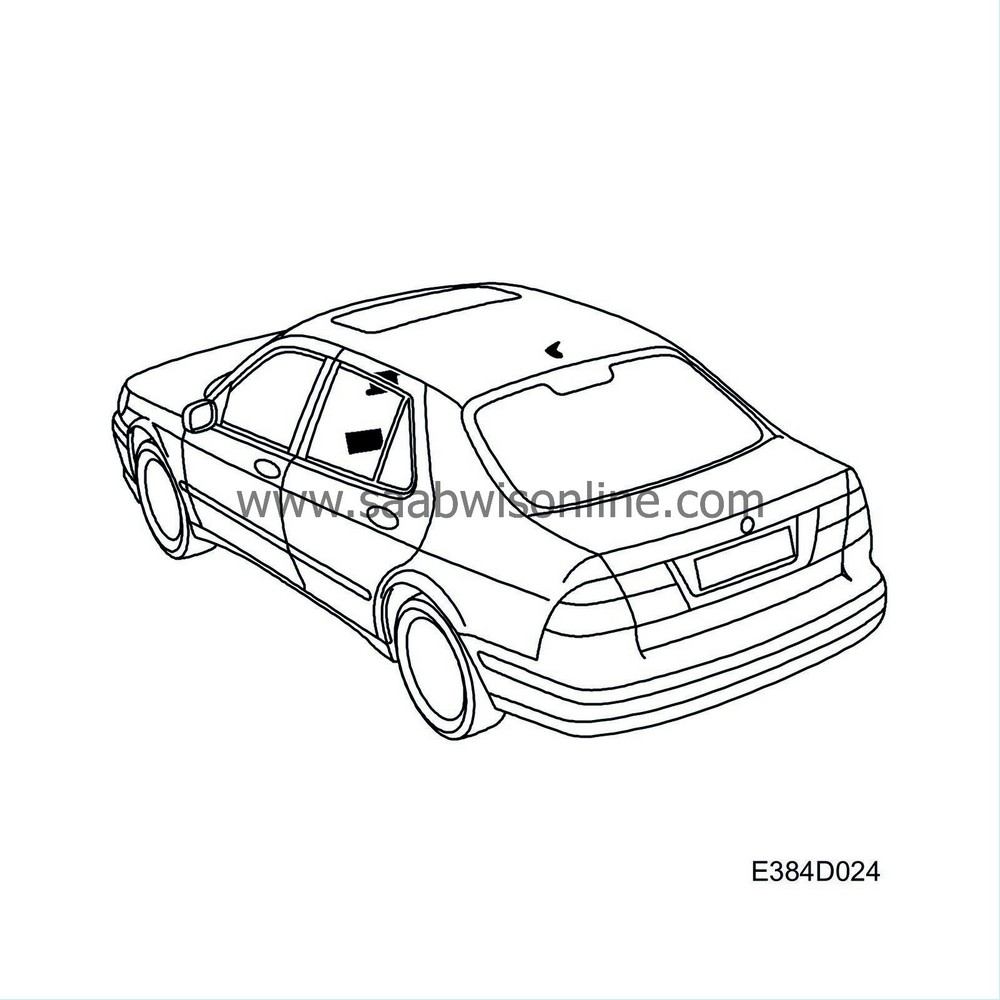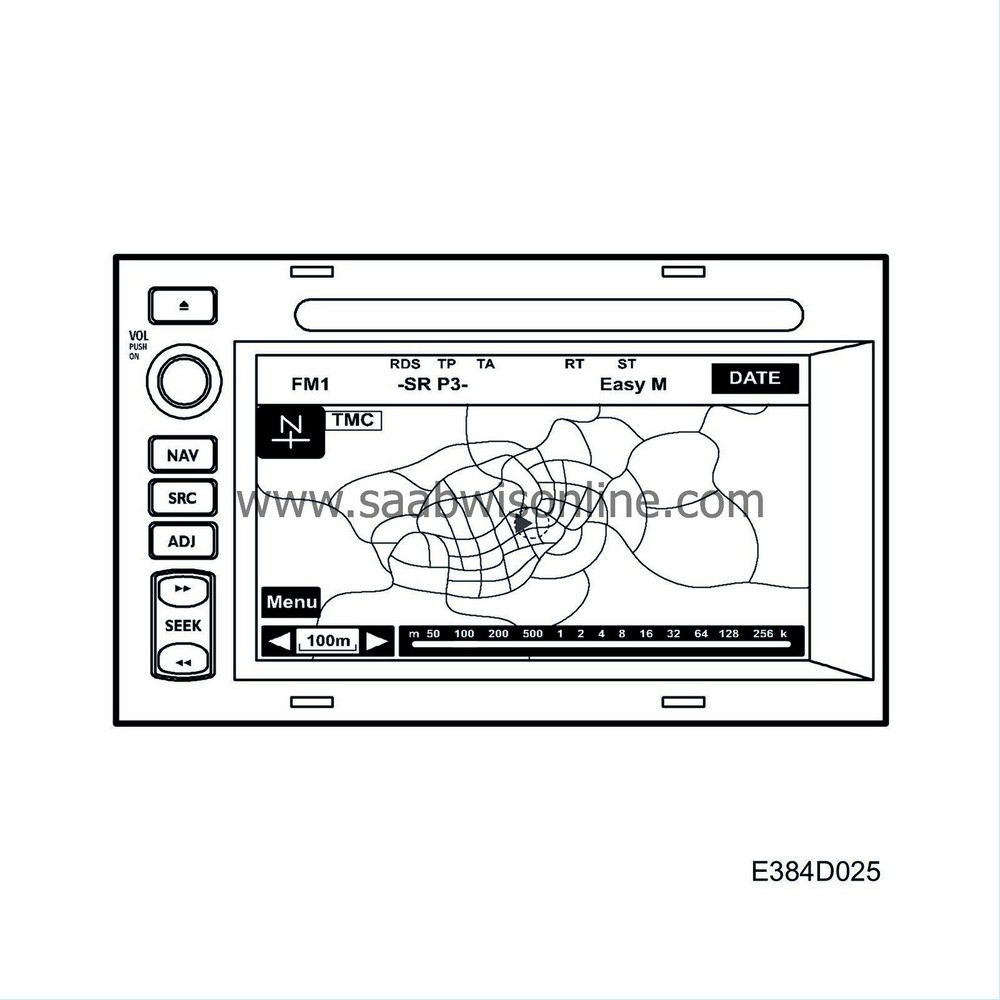Navigation
| Navigation |
| Overview |
The audio/navigation system has a radio receiver, navigation function and several other features.
The audio/navigation system is available in two versions: Premium and Prestige.
The navigation function is dependent on and uses the following units:

| • |
Head unit, audio/navigation
|
|
| - |
CD/DVD player
|
| - |
GPS receiver with gyro
|
| - |
Touchscreen
|
| • |
ESP control module
|
|
| • |
Amplifier
|
|
| • |
Speakers
|
|
| • |
GPS antenna
|
|
| • |
SID
|
|
| • |
Steering wheel controls
|
|
| General |
GPS satellite system

The navigation system uses the Global Positioning System (GPS). GPS has 26 satellites (of which 2 are backups) that orbit the earth at approx. 21000 km. The GPS satellites each orbit the earth twice a day along very accurate paths and transmit a specific signal to earth. The GPS receiver receives this information and uses it to calculate the position of the vehicle, accurate to 50-100 m.
The relative position of the satellites means that at least 4 are always accessible to a user on earth. Mountains, tall buildings, tunnels, car parks and suchlike can block the signals since these are readily absorbed. A GPS receiver must be in contact with at least three satellites to determine a 2D co-ordinate (latitude and longitude). Reception from four satellites enables a 3D co-ordinate (latitude, longitude and height). Once a position has been determined, the vehicle's speed, heading, distance, time, etc. can be calculated by the navigation system, also using the heading and speed signal provided by the vehicle.
Navigation system

The audio/navigation system head unit is located in the dashboard. The unit contains a DVD player, GPS receiver with gyro, and touchscreen.
The head unit's 6.5" touchscreen is used as the control panel and main display window, enabling the control of the system. The left-hand side of the touchscreen surround has a number of buttons - DVD eject, On/Off, navigation, sound source, display and system settings - and a volume knob.
The head unit contains a GPS receiver that receives signals from the GPS antenna and, using these, calculates the position of the car. The head unit also contains a gyro so that the system knows in which direction the car is travelling. The navigation system uses the gyro, DVD (digital maps), vehicle speed from the ESP control module, and GPS to make the calculations required for navigating to a destination.
The head unit communicates with the various other units and systems via the car's bus and wiring harnesses.
| Operation |

When the system is turned on with the On/Off button, audio or navigation must be selected with the SRC (audio) or NAV (navigation) button. All subsequent selections use the touchscreen, such as choosing a destination for navigation.
To follow the position of the car on the map when guidance is not started: Press NAV to display the map.
To creating a route, a destination or waypoint must be entered under the "Enter destination" menu.
Voice guidance from the navigation system is provided through the front speakers.
| Important | ||
|
The workshop manual does not deal with the normal operation of the audio/navigation system. Detailed information covering operation is provided in the vehicle owner's manual. |
||


